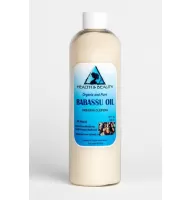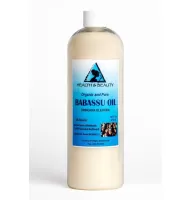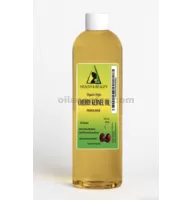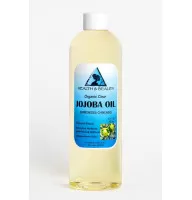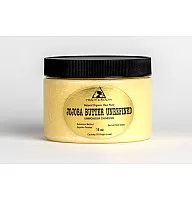$0.00
Checkout7 facts about natural face masks
 Most modern natural face masks are designed for complete convenience and comfort in their use, so more often than not you simply apply the mask to your face and you're done. But the "mask" segment of natural cosmetics is much broader and more diverse than its counterpart in the world of conventional synthetic cosmetics, so there are some secrets, rules and life hacks that will help you use natural masks more effectively, getting more benefits and beauty for your skin!
Most modern natural face masks are designed for complete convenience and comfort in their use, so more often than not you simply apply the mask to your face and you're done. But the "mask" segment of natural cosmetics is much broader and more diverse than its counterpart in the world of conventional synthetic cosmetics, so there are some secrets, rules and life hacks that will help you use natural masks more effectively, getting more benefits and beauty for your skin!
Facts about natural masks
1. The mask is applied to thoroughly cleansed skin - this is an immutable rule. The cleansing process in this case also plays the role of preparing the skin for the perception and absorption of beneficial trace elements from the mask, so this stage cannot be bypassed. Everyone knows about this (and almost always warns in the annotation on the mask label), but few people know that instead of the usual cleansing, you can ... make another mask. The tandem "cleansing mask + care mask" is very powerful in terms of action on the skin, because the first mask deeply cleanses, sometimes even exfoliates the skin, smoothes, opens pores, and the second gives 100% of its efficiency, lying on such fertile "soil". The process is simple: you apply a cleansing mask, hold it, wash it off - and then, within 3-7 minutes, apply the next, care mask, for example, moisturizing, nourishing, detox, alginate.
2. Many masks are afraid of drying out during exposure to the skin - this must be taken into account. This is especially true for masks with clay and, in general, initially dry, powder. Clay sets very quickly, in minutes, moisture evaporates - and your skin is under a layer of dry, like a stone, clay, which is not very useful, because it can stretch the skin and even add wrinkles. Most often, oils and other components are added to clay and powder masks, if not preventing drying out, then greatly slowing it down. But still, when holding such a mask, make sure that it does not dry out on your skin; it is best to periodically spray it with water or hydrolate from a spray bottle: this will moisturize the mask, but will not rub it off.
3. The fastest, most comfortable and self-sufficient masks are disposable overhead masks, the brightest representatives of which are fabric and hydrogel masks (and, in a special case, eye patches). Their use is simplified as much as possible: you simply cleanse the skin, apply a mask and keep it for 15-30 minutes. But the main plus is in the finale: you take off the mask, throw it away, but don't wash your face! Quite the opposite: many manufacturers recommend massaging the remaining hydrogel and, in general, the moisture on the face into the skin like a cream. After such a mask, you do not need to not only wash your face, but also apply tonic, cream, etc. You can simply sprinkle the skin with hydrolate for additional hydration (if desired), and after a while, apply your cream if you do not have enough nutrition from the mask.
4. The mask is a gregarious "creature": most masks are perfectly combined with other cosmetics and work better in tandem. We have already talked about the first example - cleansing before a mask, but this is not the whole list. Serums and concentrates for the skin work great with alginate masks: they are applied in advance, then immediately - the mask. This collaboration enhances the effects of both masks and serums - and your skin doubles as a winner! Concentrated creams, especially nourishing ones, as well as oils for the skin and serums, work great with cleansing and exfoliating masks. The effect of unidirectional masks and creams is also mutually enhanced: you apply, for example, a moisturizing mask, and after rinsing it off, a moisturizing cream, which "seals" the effect of the mask and even increases it. Natural hydrolat tonic is generally a universal companion for any mask, without exception. After removing the mask, sprinkle the skin with hydrolate - regardless of what you are going to do next; you will definitely thank you for this!

5. Masks can be different in their immediate effect: some instantly tighten and refresh the skin, others need 3-4 applications to show themselves, but all natural masks are in fact a cumulative action. Even a "quick" mask, with the help of which you urgently put your skin in order before going out or a photo session, will give many times greater and better effect if you do it regularly, in most cases - 2-3 times a week. And masks that are designed to correct any real problem (moisturizing, brightening, whitening, anti-dehydration, etc.) are generally recommended to be applied in courses, because 1-2 sporadic uses simply will not give you anything, will not have time to help you. In this sense, it is not disposable masks that are good, but canned ones, since in one jar of 50-100 ml, as a rule, the masks are enough exactly for the course of application.
6. When it comes to natural cosmetics, a mask can be not only masks themselves, but practically anything you like. For example, pure cosmetic clay (dilute with water, apply to a damp face, and moisten occasionally). Or ubtan for washing (instead of rinsing off immediately, leave it on your face for 5-15 minutes). Or cosmetic oil, oil mixture with essential oils. This allows you to experiment and even invent your own, "proprietary" masks, compose them from almost nothing. For example, you have white cosmetic clay lying around, and you also have ubtan for washing and jojoba oil, which you sometimes put on your face instead of cream. Mix half a teaspoon of clay and half a teaspoon of ubtan with hot water until the consistency of a viscous gruel, add 2-3 drops of jojoba oil - and your hand made mask is ready! She will not miss the stars from the sky, she will simply soften the skin, smooth and cleanse a little, but try it - what if your skin will like it?
7. When choosing and applying a mask, be sure to consider the skin around the eyes. Some masks are strictly forbidden to be applied to delicate eyelids, while other masks, on the contrary, are recommended to be used for this delicate area. Look at the needs of your skin and follow the manufacturer's recommendations! By the way, every single mask for the skin around the eyes is also suitable for the skin of the face - but if the skin is not oily and not prone to acne (many eye masks will be too oily for such skin). Therefore, do not be afraid to apply the mask to your cheekbones, nose, or even your entire face, especially if you have thin, dry, aging or sensitive skin. Almost all masks for the skin around the eyes have a strong softening effect, often tightening, so that the skin after them will look fresher and more tender.


